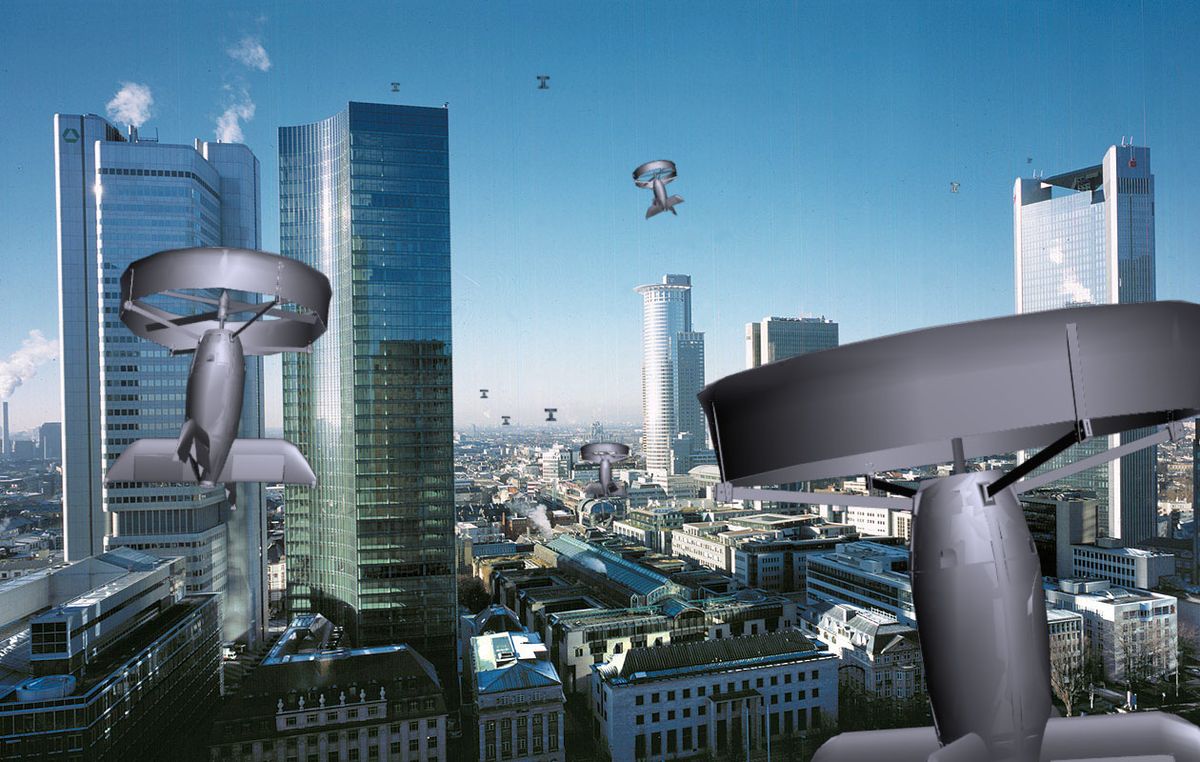Drones can do some incredible acrobatics. Being robots, they don’t care all that much about flying sideways or upside-down or making sudden acceleration changes or even doing things like this. If you were somehow a passenger on that drone and weren’t a trained fighter pilot (and maybe even if you were), you’d pass out and very likely die. Drones don’t do a lot of passenger carrying at the moment, which is probably for the best, but we’ve seen enough crazy ideas to suggest that using autonomous drones instead of autonomous cars to transport humans is probably going to be a reality within a handful of decades.*
At the École Polytechnique Fédérale de Lausanne (EPFL), in Switzerland, a group of researchers led by Dario Floreano is already worrying about how we’re going to handle personal drone flights, especially in situations where a lot of drones are trying to go in a lot of different directions at the same time. They’ve come up with an algorithm that allows drones to avoid collisions with each other while also not turning humans into mounds of quivering goo.
Here’s the problem, neatly summarized by the researchers:
In order to be widely accepted as a new mean of transportation, PAVs [personal aerial vehicles] automation capabilities should not only ensure safety but also tackle the problem of the passengers comfort. Even if some people do appreciate the adrenaline rushes coming from aggressive maneuvers, the vast majority would prefer a quiet ride. If the automation in PAVs cannot guarantee a certain level of comfort, the general public will not adopt this new transportation system.
In other words, if it freaks you out, makes you puke, or is otherwise too much like a roller coaster, it’s unlikely you’re going to want to use a personal aerial vehicle for your regular commute, which would (mostly) defeat the purpose of having PAVs around at all. And it’s not just important for human passengers, either: there are plenty of cargoes that don’t react well to rapid acceleration changes—consider future firefighting drones, which will need to be careful that the water they carry doesn’t slosh back and forth too much, destabilizing them.
Passenger comfort in vehicles can be measured in amount of jerk, or how much of a jerk your driver is being. But seriously folks, “jerk” is a technical term that refers to the time derivative of acceleration: high acceleration over a short amount of time is a jerk move, and “it has been shown that the level of physiological discomfort for passengers rises with the magnitude of jerk.” Yes, yes it does.
The EPFL researchers modified a strategy called Optimal Reciprocal Collision Avoidance, or ORCA. ORCA is a “reactive decentralized collision avoidance strategy” that can make sure that multiple robots can avoid running into each other in 3D space. You can include parameters to limit the acceleration that ORCA imposes on vehicles, but not jerkiness, so the researchers added a jerkiness restriction to make sure that the drones can be instructed to fly as comfortably as you want. “As you want” is key here: the more jerk you can handle, the faster and more efficient of a path ORCA can plan, so you’re essentially trading speed for comfort.
Sadly, EPFL didn’t run tests with actual PAVs, but they did try out their system with a swarm of 10 unmanned drones. The video is a bit dry, but you can skip the first two minutes. The real-world test starts around minute three.
This research was funded in part by the EU’s myCopter project, which is already working on “creating a personal air transport system (PATS) that can overcome the environmental and financial costs associated with all of our current methods of transport.” The idea is using “fully or partially autonomous Personal Aerial Vehicles (PAVs) for travelling between homes and working places, and for flying at low altitude in urban environments.” Cool, right? Nice job, Europe, for having the foresight and optimism to put money towards things like this.
“Human-Comfortable Collision-Free Navigation for Personal Aerial Vehicles,” by Nicolas Dousse, Gregoire Heitz, Felix Schill, and Dario Floreano from EPFL, is in the current issue of IEEE Robotics and Automation Letters.
[ EPFL ]
*This estimate is based on me making stuff up. Somewhere between 10 and 1,000 years from now, let’s say.
Evan Ackerman is a senior editor at IEEE Spectrum. Since 2007, he has written over 6,000 articles on robotics and technology. He has a degree in Martian geology and is excellent at playing bagpipes.



